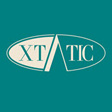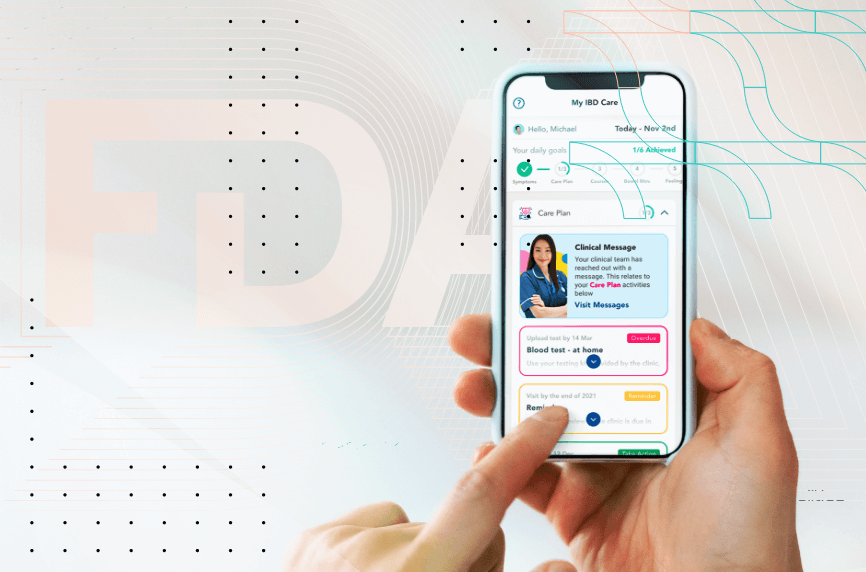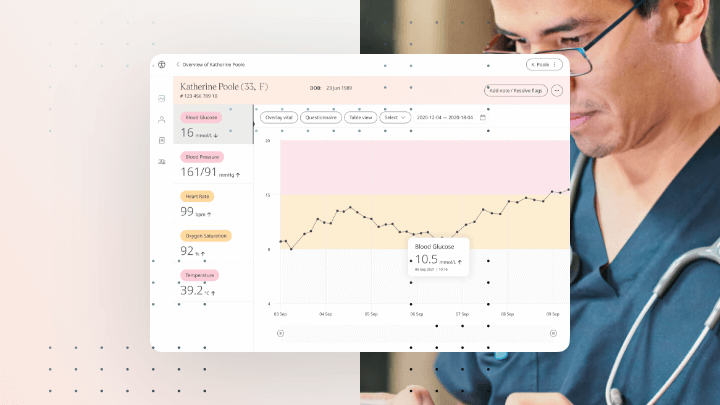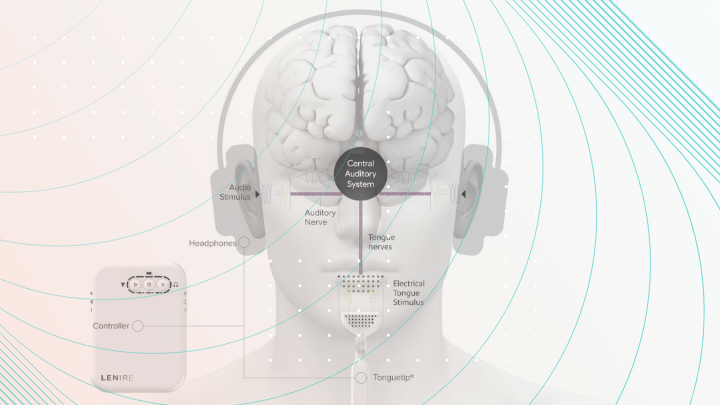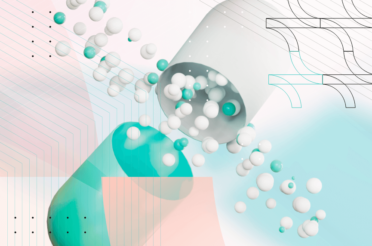The Food and Drugs Association (FDA) has approved 50% more Digital Therapeutics (DTx) than in 2023 compared to the previous year, which sets a completely new precedent.
Because of that, the DTx medical devices landscape saw significant progress, marked by notable regulatory approvals, strategic collaborations, and innovative product launches.
Key pharma-DTx alliances aimed to address a diverse range of clinical conditions which emphasizes the sector’s commitment to enhancing patient care. Regulatory bodies like the FDA recognized the clinical efficacy of several DTx solutions, granting approvals for devices targeting conditions such as migraine, tinnitus, PTSD, and fibromyalgia.
These developments, alongside the launch of cutting-edge tools like therapeutic video games and VR-enabled apps, underscore a year of substantial advancement in the digital therapeutics field, setting a promising trajectory for the future integration of DTx solutions into mainstream healthcare.
Most health and wellness apps, similar to dietary supplements, are not regulated by the FDA due to their low-risk nature. However, in the medical devices industry, DTxs do because they pose a higher risk if they malfunction. This necessitates rigorous documentation, specification, and proof of clinical safety like other medical devices.
Digital therapeutics themselves are therapeutic solutions powered by high-quality software, designed to prevent, manage, or treat medical conditions or diseases based on solid scientific evidence. These digital tools provide personalized and accessible support, enabling patients to effectively manage their health conditions and access help whenever they need it.
In other words, DTx represents a new category of medicine, offering therapeutic interventions that are driven by sophisticated technology, including artificial intelligence and machine learning.
Huma Therapeutics’ SaMD platform
Huma Therapeutics’ SaMD platform has marked a significant milestone in digital health by securing US FDA 510(k) Class II regulatory clearance in the middle of 2023. This clearance sets Huma’s platform apart as a leading, versatile tool in disease management, capable of adapting to various medical conditions.
The platform is designed to be disease-agnostic, which means that it can be applied to a wide range of health issues without being limited to a specific disease or condition.
Its most important feature is that it empowers healthcare providers and patients by facilitating disease management and monitoring through digital pathways, enabling the collection of patient data for self-management or remote assessment by healthcare professionals.
The platform includes a variety of digital health tools like digital screening, primary care systems, and risk assessment tools, to enhance clinical decision-making and patient care.
The Class II designation indicates that the platform is deemed to have moderate to high risk to the patient and the user, but it has met the stringent requirements of safety and effectiveness set by the FDA. This classification also allows the platform to integrate and host AI algorithms that significantly enhance its capabilities in risk disease prediction, diagnosis, and prognostication.
The major challenges in bringing such an innovative platform to the end-user involve navigating the complex regulatory landscape and ensuring seamless integration with existing healthcare systems.
The rigorous FDA clearance process requires a demonstration of safety and efficacy, which can often be a challenge for those looking to get their own platform approved. However, the successful navigation of this process, as exemplified by Huma, not only validates the platform’s clinical utility but also paves the way for future innovations in digital health.
For developers aiming for similar regulatory success, a couple of key takeaways from Huma’s journey stand out. Firstly, the importance of building a versatile, disease-agnostic platform cannot be overstated as it broadens the potential user base and applicability in various clinical scenarios. Secondly, integrating advanced technologies like AI to ensure your platform’s compatibility with a range of external devices will be crucial in meeting the diverse needs of patients and healthcare providers.
Theranica’s Nerivio device
In February of the same year, Theranica’s Nerivio, a groundbreaking digital therapeutic device, also received the same type of clearance by the FDA. This time, for the preventive treatment of migraines in patients 12 years and older.
Nerivio is a wearable device that employs non-painful remote electrical neuromodulation (REN) to activate the body’s peripheral nerves, helping alleviate both acute and chronic migraine pain. This innovative approach offers a significant alternative to traditional pharmaceutical treatments, providing relief without medication and its associated side effects.
The journey to FDA approval involved a step-by-step process that included a comprehensive clinical trial that demonstrated the device’s effectiveness in preventing migraine attacks.
The trial included a 4-week baseline observation phase and an 8-week double-blind intervention phase, in which 248 participants were ensuring the robustness of the results.
The device had previously received approval as an acute treatment for migraine based on a single-arm, multicenter study. This dual-use approval, covering both acute and preventive treatment, marks a significant milestone in migraine care, especially for adolescents seeking drug-free treatment options.
Despite the team’s proven efficacy and safety profile, the path to the adoption of Nerivio has not been without challenges. Accessibility and awareness are critical factors in ensuring that patients in need can benefit from this innovative treatment had to be considered.
Educating healthcare providers about the device’s capabilities and ensuring it’s integrated into standard migraine treatment protocols were essential steps that Theranica’s team had to make in overcoming these hurdles.
For developers seeking to replicate such regulatory achievements, highlighting a crucial takeaway from Nerivio’s approval journey is essential. You need to address a real and widespread need that caters to your target audience.
Nerivio does this with migraine treatment, as it provides a non-pharmacological, user-friendly solution that significantly enhances the device’s appeal to both regulators and end-users.
NeuroMod’s Lenire neuromodulation device
NeuroMod’s Lenire device is a significant innovation in the treatment of tinnitus that got approved a month after Theranica’s device. This non-invasive device is the first of its kind, received the FDA’s De Novo approval which officially marked it as a pioneering solution in the field.
Lenire functions through bimodal neuromodulation by integrating auditory and tongue stimulation to alleviate the severity of tinnitus symptoms. It includes Bluetooth headphones, a lightweight handheld controller, and the Tonguetip intra-oral device, working in unison to deliver this unique therapeutic approach.
The FDA De Novo clearance is a testament to Lenire’s unique position in medical technology, establishing a new regulatory category for devices and recognizing the device’s technological and clinical innovation. The approval followed a couple of clinical trials, with the TENT-A3 trial showing that 79.4% of participants experienced a clinically significant improvement in tinnitus symptoms.
This finding, along with high compliance rates and strong recommendations from participants helped NeuroMod prove the device’s effectiveness and user satisfaction. Even though it was providing an innovative solution, Lenire’s journey to the end user faced the following obstacles:
- Doing a fair bit of market research is crucial in ensuring that patients are going to benefit from this advanced treatment.
- The device’s novel approach also requires adequate training for healthcare professionals as you need to ensure that they can effectively integrate Lenire into their clinical practice.
Lenire’s journey also offers valuable insights if you want to navigate the De Novo clearance pathway successfully. Firstly, as a developer or a medical device, you need a clear demonstration of clinical efficacy and safety, as evidenced through rigorous and well-designed trials.
Secondly, you need to create a detailed educational framework for healthcare providers to be able to facilitate the integration of new technology into clinical practice when using your device.
GreyMatters’ brain-stimulating software
An interesting launch also happened in Israel in November 2023. GrayMatters Health has developed Prism, a pioneering self-neuromodulation digital therapy device specifically designed for PTSD treatment.
This groundbreaking device utilizes neurofeedback on particular biomarkers to aid patients in identifying and harnessing their own mental strategies to diminish their emotional responses.
The focus is on an amygdala-derived biomarker that targets the emotion regulation mechanism commonly linked with the fight-flight-freeze instinct. The therapy involves 15 sessions over eight weeks, during which patients engage in a virtual environment and learn to influence the scenario with their mental strategies, a process known as neurofeedback.
Prism received FDA 510(k) clearance, signaling its safety and efficacy as an adjunct therapy for PTSD. This clearance represents a significant advancement in the treatment of PTSD, offering an innovative approach that complements standard treatments like psychotherapy and pharmacotherapy. Clinics adopting Prism are equipped to integrate this advanced therapy into their existing treatment models, thereby enhancing patient outcomes and adding potential revenue streams.

Understand how the FDA regulatory framework applies to DTx solutions
Speak to an expert today, and see how our on-demand IT talent and augmented teams can efficiently deliver value at every step of your roadmap.

One of the major hurdles before the FDA clearance of Prism was ensuring the effective integration of this new technology into existing PTSD treatment protocols and clinician training. Working with such complicated medical cases also requires some sort of insurance. Therefore the developers had to navigate the insurance landscape to secure coverage for patients can be a complex process.
For everyone aiming to create and gain approval for similar therapeutic devices, there are several key takeaways from GrayMatters Health’s journey with Prism.
Firstly, a strong foundation in scientific research, particularly in understanding and targeting specific brain mechanisms, is important if you want to even have a chance of getting your software considered.
Secondly, you need to develop a patient-centric model that combines advanced technology like EEG and fMRI with interactive software. This strategy can greatly enhance the therapy’s effectiveness so you can increase its chances of the brain stimulating software being approved.
Lastly, conducting thorough clinical trials to demonstrate the safety and efficacy of the device is paramount for gaining regulatory clearance and clinician acceptance.
Click Therapeutics’ CT-132 app for migraine
Even more recently, Click Therapeutics’ DTx app, known as CT-132, was approved by the FDA. The app itself represents a significant innovation in the treatment of episodic migraine.
By recognizing the complex and debilitating nature of migraine, which affects millions and leads to significant impairment in various life domains, Click Therapeutics developed this digital therapeutic to serve as an adjunctive preventive treatment.
Most importantly, the app’s foundation lies in the company’s proprietary Click Neurobehavioral Intervention (CNI) Platform, which employs machine learning and data analytics to personalize treatment strategies for individual patients.
The FDA granted the app Breakthrough Device Designation, a status that acknowledges its potential to provide more effective treatment compared to the existing standard of care for serious or life-threatening diseases.
This designation is instrumental as it expedites the development and review process of medical devices and facilitates collaborative discussions with the FDA, which paves the way for a more streamlined path to market.
The unique aspect of Click’s approach is the fusion of digital neuroactivation, modulation (DiNaMo), and neurobehavioral interventions aimed at addressing unmet needs in the treatment of brain diseases like migraine. (23)
Despite the promising aspects of CT-132, there were still certain aspects that were part of the development journey which turned out to be challenging:
- Firstly, ensuring adherence to FDA regulations and navigating the intricate process of clinical trials and regulatory submissions is a complex task.
- Secondly, the adoption of digital therapeutics in the healthcare landscape involves addressing concerns related to patient engagement, data privacy, and integration into existing healthcare systems.
- Lastly, establishing the efficacy of digital therapeutics and gaining acceptance from healthcare providers and patients alike requires robust clinical evidence and effective communication of the benefits and safety of the treatment.
Now what does this mean for you and your app as an entrepreneur? Several lessons can be gleaned from Click Therapeutics’ journey.
First, you need to obtain a designation like the FDA’s Breakthrough Device Designation, as it recognizes your therapeutic potential and accelerates the development and review process.
Secondly, leveraging advanced data analytics and machine learning to personalize treatment can enhance the effectiveness of digital therapeutics.
Lastly, you and your team need to have a solid foundation in clinical research, leading to robust evidence of efficacy and safety. This is crucial for gaining regulatory approval and acceptance among important healthcare providers and your future patients.
Swing Therapeutics’ DTx app Stanza
Swing Therapeutics’ Stanza app is a pioneering digital therapeutic designed to address the complex challenges of fibromyalgia. This condition affects millions and is characterized by chronic pain, fatigue, and cognitive symptoms.
Recognizing the limitations of current pharmacological treatments and the underutilization of non-drug approaches like Cognitive Behavioral Therapy (CBT) and Acceptance and Commitment Therapy (ACT), Swing Therapeutics developed Stanza.
It’s a smartphone-based prescription digital therapeutic (PDT) that delivers a 12-week self-guided program of ACT, validated through multiple randomized controlled trials and real-world studies to effectively reduce fibromyalgia symptoms.
Stanza’s journey to FDA De Novo marketing authorization involved meticulous development and rigorous testing, including the landmark PROSPER-FM trial, the largest device trial ever for fibromyalgia treatment.
The trial’s positive outcomes demonstrated significant symptom improvement, a low-risk safety profile, and high patient satisfaction with the program, laying a robust foundation for FDA approval.
The app was designed to deliver tailored, evidence-based, comprehensive treatments, by also addressing the broader challenge in fibromyalgia treatment of patients lacking a medical home. It’s currently available through Swing Care, a virtual care platform offering personalized, holistic care, with Stanza as a core treatment option.
Despite the breakthrough, bringing Stanza to end-users was not easy for its creators. Ensuring adherence to FDA regulations, proving clinical and economic value to secure payer coverage, and integrating the digital therapeutic into the healthcare system were significant hurdles.
For entrepreneurs aiming to also navigate this landscape, two valuable lessons can be drawn from Swing Therapeutics’ approach to getting approved.
Firstly, focusing on user engagement and experience is paramount, ensuring that the digital therapeutic is not only effective but also accessible and user-friendly.
Secondly, fostering collaborative discussions with regulatory bodies like the FDA can significantly streamline the approval process and expedite market access.
Conclusion
As the digital landscape continues to evolve, the surge in DTx solutions presents a significant paradigm shift in healthcare, which emphasizes the need for meticulous development and rigorous regulatory compliance. The journey to FDA approval for developers and entrepreneurs highlighted in this article is a testament to the intricate process of combining technological innovation with clinical efficacy.
Each of these trailblazers has navigated a complex web of clinical trials, user experience studies, and stringent regulatory guidelines to ensure their products not only meet medical standards but also genuinely enhance patient care.
As we reflect on the regulatory hurdles overcome by these pioneers, it becomes clear that the path to approval is not just a journey but a complex process of ensuring patient safety, efficacy, and satisfaction. The process underscores the importance of evidence-based development, user-centered design, and proactive engagement with regulatory bodies.
For anyone eyeing the developing DTx market, projected to be worth $21.46 billion by 2030, the lessons from these six forerunners are invaluable.

Whether you’re a startup, a Fortune 100 company or a government organisation, our team can deliver a solution that works for you.
BGO Software
It is important to understand the regulatory landscape, learn from the triumphs and setbacks of predecessors, and recognize the potential of DTx in revolutionizing healthcare. The journey of these DTx solutions from concept to FDA approval is not just a narrative of success but a roadmap for you as a future innovator aiming to make a meaningful impact in digital health.
